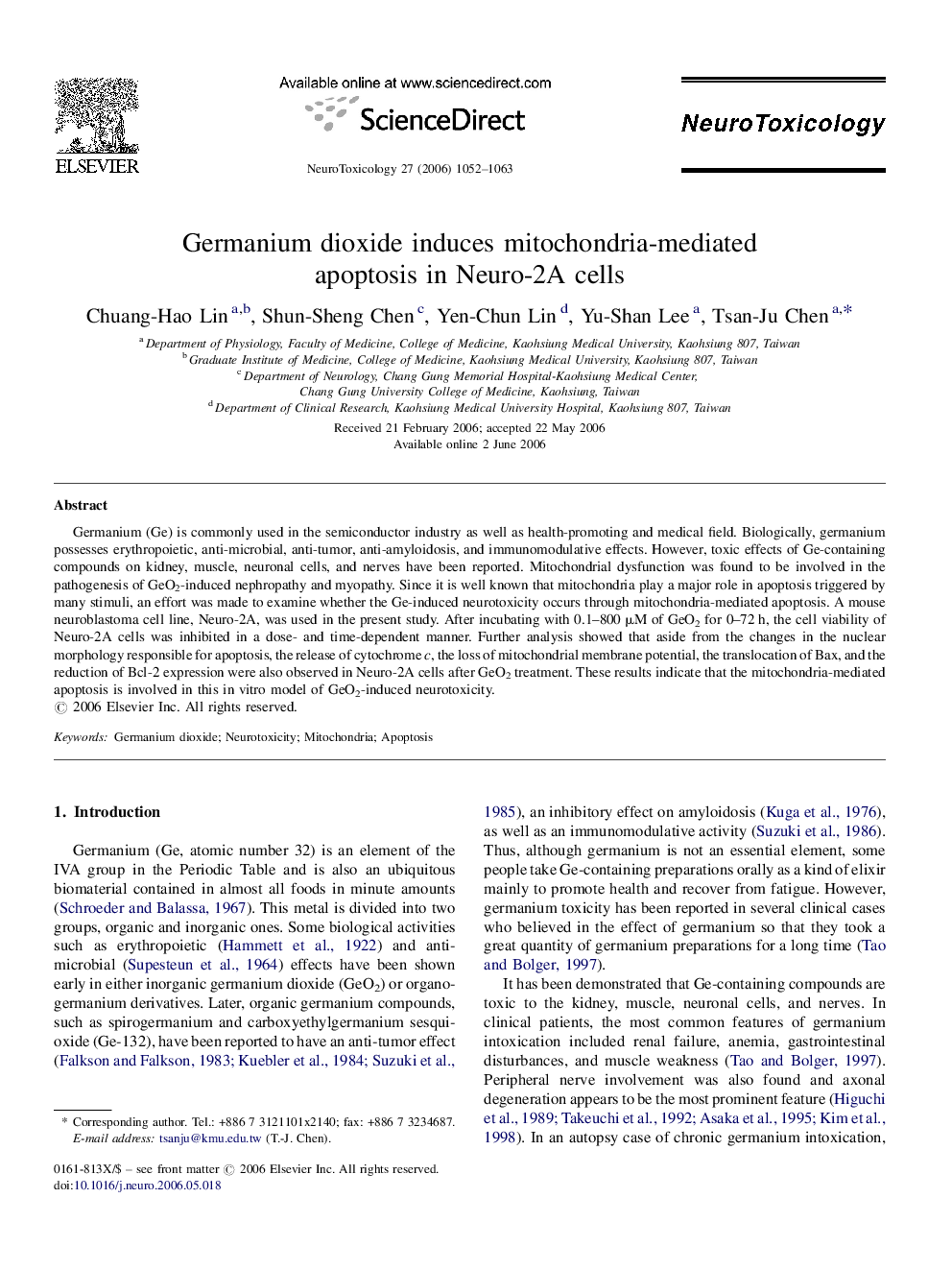| Article ID | Journal | Published Year | Pages | File Type |
|---|---|---|---|---|
| 2590529 | NeuroToxicology | 2006 | 12 Pages |
Germanium (Ge) is commonly used in the semiconductor industry as well as health-promoting and medical field. Biologically, germanium possesses erythropoietic, anti-microbial, anti-tumor, anti-amyloidosis, and immunomodulative effects. However, toxic effects of Ge-containing compounds on kidney, muscle, neuronal cells, and nerves have been reported. Mitochondrial dysfunction was found to be involved in the pathogenesis of GeO2-induced nephropathy and myopathy. Since it is well known that mitochondria play a major role in apoptosis triggered by many stimuli, an effort was made to examine whether the Ge-induced neurotoxicity occurs through mitochondria-mediated apoptosis. A mouse neuroblastoma cell line, Neuro-2A, was used in the present study. After incubating with 0.1–800 μM of GeO2 for 0–72 h, the cell viability of Neuro-2A cells was inhibited in a dose- and time-dependent manner. Further analysis showed that aside from the changes in the nuclear morphology responsible for apoptosis, the release of cytochrome c, the loss of mitochondrial membrane potential, the translocation of Bax, and the reduction of Bcl-2 expression were also observed in Neuro-2A cells after GeO2 treatment. These results indicate that the mitochondria-mediated apoptosis is involved in this in vitro model of GeO2-induced neurotoxicity.
